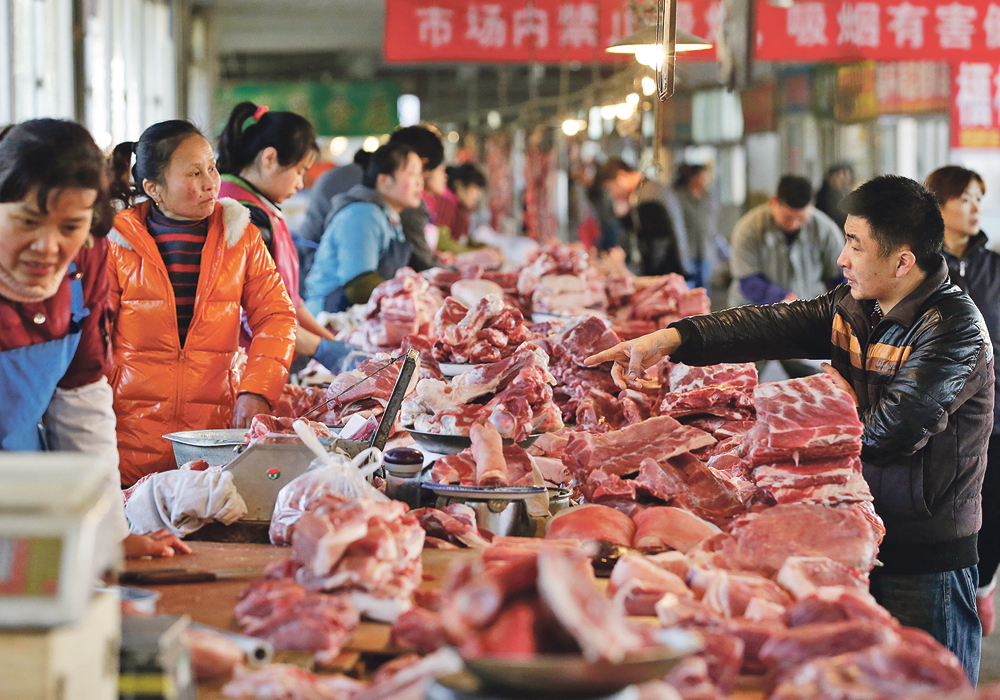There are several take-away messages from the November monthly supply and demand report from the U.S. Department of Agriculture.
- If you take China’s stocks out of the totals, global corn and wheat year-end stocks should shrink this year compared to last, providing support for grain prices.
- The November estimate of the U.S. soybean crop is not quite as large as in the October report, but it is still record large. And with the tariff war with China stopping U.S.-China soybean trade, the forecast for U.S. year-end stocks is ballooning to a record high. The outlook for oilseed prices remains depressed.
- China’s stocks of corn saw a huge upward revision, reflecting that country’s own review of the past 10 years of its crop statistics. Previously, it looked like China’s corn stocks were coming down because of reduced production support and increased use tied to a new ethanol program. It raised hope that China might finally become a big corn importer, but it now appears the country still has a huge amount of corn in store.
Read Also

Critical growing season is ahead for soybeans
What the weather turns out to be in the United States is going to have a significant impact on Canadian producers’ prices
The corn numbers in the USDA report caused nearby futures for the grain to whipsaw around for a few minutes as traders digested the several revisions from the previous month.
The good news for farmers’ prices was that the department reduced its forecast for U.S. corn production by about four million tonnes to 371.5 million and cut the year-end stocks forecast to 44.1 million tonnes, down two million from the previous month and down about 10 million from last year.
However, there was initial shock looking at the global year-end stocks number, which soared to 307.5 million tonnes from 159.4 million in the October report.
The increase was completely because of the revision in China’s stocks, which rose to 207.5 million tonnes from 58.5 million the previous month.
Indeed, if you remove China from the spreadsheet, global year-end stocks shrank slightly from the previous month.
Compared to last year, global corn stocks, not counting China, are expected to fall to slightly more than 100 million tonnes, down from 118.4 million at the end of 2017-18. That is all due to the falling stocks in the United States.
So stocks, minus China, are headed in the right direction to support corn prices. It is legitimate to set aside China’s stocks because they have never dumped them on the world market.
Given the fairly tight corn supply outlook, nearby corn futures are strong for this time of year. The price in early November was higher than the previous three Novembers. You have to go back to 2014 to find better prices at the start of November, although they have been higher at other points of the year.
Meanwhile, soybeans for this time of the year are significantly weaker than at the same point in 2017 and 2016.
The USDA forecasts that U.S. soybean ending stocks will be a record 26 million tonnes, up about two million from last month’s forecast, up a whopping 14 million tonnes from last year and up 17.8 million from the year before that.
This is because of the record large U.S. crop and the prospect of much reduced exports to China.
The corn-soybean price ratio favours corn at this point, leading analysts to expect a big drop in U.S. soybean acreage and increases in corn and wheat next spring.
Of course, the outlook would change enormously if a truce was called in the trade war.
We all know trade with China is major factor in agriculture and the world economy in general.
Domestic policy there is also influential, and the corn market over the past two years was watching with interest Beijing’s efforts to reduce its huge surplus of corn stocks.
It had completely rewritten its agriculture policy, cutting production subsidies on corn and other crops. Also, it instituted a policy calling for all gasoline to have 10 percent ethanol content by 2020.
As a result, corn consumption was outpacing production by about 25 million tonnes a year, and its year-end stocks were falling.
Just last month, the USDA estimated Chinese corn stocks at 58.5 million tonnes, down from more than 100 million tonnes just two years earlier.
At that pace, China would run out of corn and have to either increase production again or increase imports. Likely there would be a combination of the two, and the imports would support world corn prices.
But now, after a review of its past 10 years of agricultural statistics, China says corn production was much higher than thought and its stocks are still massive, at 207.5 million tonnes.
If that is correct and if the stored corn is of a quality that can be used, then China can increase its ethanol output without worrying about spending money importing corn in the future.
China’s statistical review also raised its estimate of wheat production and stocks, but the increase was not as dramatic as the corn increase.
This is not the first time China has reviewed its statistics and made enormous increases to its numbers. Clearly it has big problems with its agricultural statistics system.
The bottom line is that this change has little affect on current prices, but hopes that China would start to import large amounts of corn or ethanol to meet its 2020 goal will likely have to be put on hold.

















